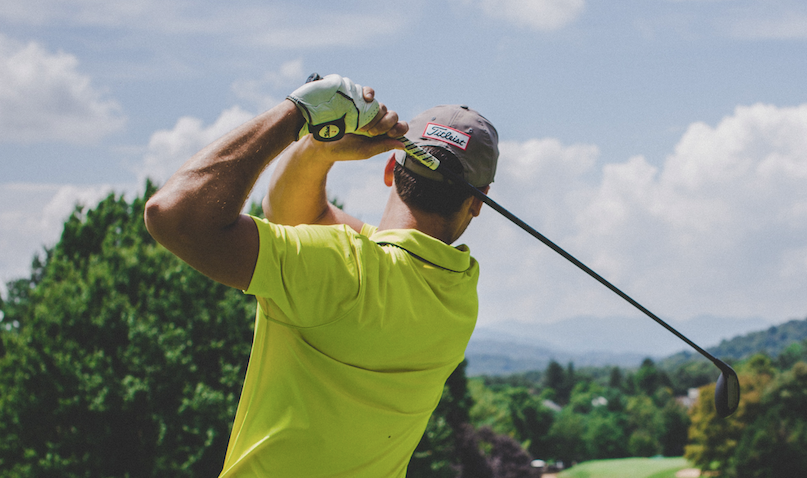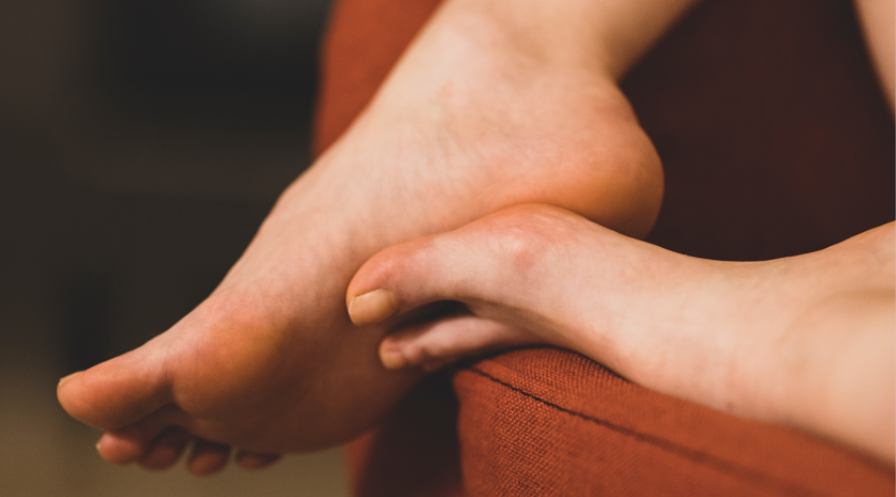Wearable technology has been a trending topic for the last few years, but the market has grown over the past decade to include far more than just fitness trackers, smart watches, or sunglasses that can record video. Wearable technology, also known as “wearables,” encompasses any device or gadget with a practical use. Jeff Hiserman, PT, hosts a podcast called You Wear It… Well, where he discusses different forms of wearable technology and their functions. Our founder and CEO, Bimla Picot, was asked to join Jeff on his podcast this week to discuss the tech behind Reboundwear, what it does, who it is for, and how it helps! The podcast is now live and is available on Apple Podcasts, Spotify, Pocket Casts, and Podbay! A transcript of the podcast can be found below.
J: I would like to welcome you to another session of You Wear It… Well. Today my very special guest is Bimla Picot, who is here to talk about a very interesting line of adaptive wear, and without saying too much more I’m going to turn it over to her, because who knows it better than Bimla herself! Bimla, the floor is yours!
B: Hi Jeff, so nice to meet you, and so wonderful to be on the podcast! My name is Bimla Picot, I am the founder and CEO of Reboundwear. What we like to say about Reboundwear is that it is where fashion meets function, it’s a line of adaptive clothing that meets the needs of everyone from children to octogenarians.
J: I’ll vouch for that! I have taken a look at the website and I have to say the clothing, other than being told that it is adaptive wear, doesn’t look like it. It is stunningly clean and lean, really a beautiful look. And there are many different sizes available. I can see my patients from those age groups that you mentioned all wearing, and benefiting from, it. Where did the inspiration come from to do this line of clothing?
B: I started Reboundwear because I am part of a generation that takes care of my friends, my children, my parents, and within a period of six months, many of my loved ones had some form of surgery. First, my mom had a hip surgery, she was very easy going and didn’t complain, but the hardest part of her recovery was getting dressed after surgery and then going to PT. Then, I had two young sons who had to have shoulder surgeries, and again they weren’t so worried about the surgery itself, but when they left the hospital they were embarrassed that they were bare chested, or they were having difficulty putting on an oversized button down shirt as recommended by the surgeons. Then I had a very close family friend who fell down and we had to put her in an assisted living facility while she recovered. In each case, the physical mobility issues were different, but the day-to-day struggle of trying to get dressed and undressed in regular clothes was the hardest part of everybody's day. Typically, when people have a mobility issue they are actually required to get dressed and undressed multiple times a day for treatments, therapies, doctors appointments. So, while most of us only dress and undress twice a day, it seemed particularly unfair for this group of friends that they had to struggle so much. That’s when I began thinking, “There has to be a better way. ” It seems like such an easy thing, yet it can become so difficult.
J: Obviously you didn’t just design these clothes because you felt like it, tell us a little about your background!
B: I have a background in high-end fashion. I had worked for a lot of fashion companies like Chanel, Armani, and Valentino, and I designed my own line of baby clothing, so the idea of ‘stylish’ clothing is very familiar to me. When I looked into the market for something to help my mother get dressed after her hip surgery, the pants had diaper panels, and in general looked like they were clothes… not of the 21st century. My mother was used to wearing leggings and really nice tops, even though she was in her 80s, she still wanted to be comfortable and on-trend. I knew that if I bought her something that looked like a housecoat, she would be so sad, maybe even depressed at what she had to wear.
I did a lot of research when I knew that she was not the only person with this problem, I hired a PhD candidate from Columbia University who actually got into the weeds of how large this market is. I knew it could not just be my friends and family who were affected, so I wanted to know how many other people struggle with this problem regularly. While doing the research we realized there really is a mind-body connection, that if people sit at home in ill-fitting clothes, they are embarrassed by the way they look, or they’re always wearing pajamas, they’re not as motivated to get up and do the physical therapy exercises or even just walking, which will keep their blood flowing and keep them healthy. So we knew that there was some kind of mind-body connection. In a way it’s like what happened with Lulu Lemon, you know everyone jokes that people put on their athletic clothing but they never actually exercise, but psychologically they feel like they’re in this health and wellness space. So that’s what we wanted to bring to these people that were struggling with dressing. I was very fortunate to have a focus group at the Hospital for Special Surgery in New York where occupational therapists, physical therapists, doctors, nurses, and aides looked at my prototypes and gave me feedback on what was hard for the patients, and what was hard for them.
J: I have been nodding my head for the last three minutes because of what you said, that patients feel better when they look good, yes! It’s so true! And I can tell you from my many years of being a physical therapist just how true it is. Right here in my own office, I have these hospital gowns that look like they’re from the 16th Century, they haven’t changed at all. Of course, I shut the door when I examine my patients, but there’s still a vulnerability. You can see it in their face when you hand them that gown, they look at you like, “Really? It’s 2022, why do we still have these?” Or we have those shorts that fit no one, people will ask if we have another size and we have to say, “No, these literally fit no one.” And that’s it, they have to deal with it no matter how uncomfortable they are. It’s not great, and we struggle with it every day.
When you take that mentality that has been there, it’s like what you saw with your mother , she had to go out and get clothes for people who have had hip or knee surgery when there was really nothing out there. In my experience, people, especially fashion-conscious women, may have a pair of athletic shoes, but then they’ll order sweatpants for their recovery. So they come into physical therapy with their sneakers on and the gray sweatpants, and they look like Rocky! And you can tell that they don’t feel comfortable, and I think it’s because of that self consciousness while wearing those gray sweatpants which they may have never even worn before in their life. So, why now at the age of 65 or 70 are they having to wear it? Or shoulder surgery, you know they have these big sweatshirts on with a zipper down the middle and again, they look like they belong in the Rocky movie. They’re not going to go grocery shopping in those clothes after therapy, they’re not even going to want to go through the drive-through at Dunkin Donuts, because of how they feel they look. So imagine the motivation level, and you’re right, the motivation level does decrease, and I’ve seen it for years. I really advise the listeners to look at Reboundwear’s selection because the clothing is beautiful, it has clean lines, it’s lean, it’s something that I would honestly wear to a regular spring day festival. You really did a beautiful job!
B: Thank you! That’s exactly right! And that’s really the intention of Reboundwear, because we knew that everybody has to get up, they have to go to school or work, then they have physical therapy appointments or doctor's appointments, but they also have to run errands or want to meet a friend for coffee after their appointment. They want to look presentable, this sense of maintaining dignity while you’re going through a health issue is really prevalent.
As I said, we did 2 years of intense research, during which we asked people about their health related circumstances. They could get their heads around their physical conditions so to speak, you know, they understood that this was their situation and they were just going to work with it, and live with it, and do whatever they had to do to optimize their circumstances to live the best life they could. What they really wanted to talk about were their dogs, their families, their friends, their jobs, their hobbies, things that meant a lot to them. They didn’t want to focus on the potential limitations of their condition, they knew that their condition would be a part of their life for whatever timeline they were given, but they really looked forward to what they call in the medical profession, “reaching normalcy.” So that’s why we created our clothing to look like everyday clothes, so people could keep their style and dignity, because it dealt with the issues of modesty during an appointment.
My friend’s dad was a very distinguished doctor in New York, and he was of a generation where he only wore blue jeans when he went out to the country, so he didn’t own sneakers, to your earlier point of people having to wear clothes they wouldn’t normally wear. He had a situation where he was in the hospital for a long time and his doctors told him, “You need to get up and start walking, and little by little we will integrate more exercises into your recovery routine.” When I went to visit him, he was wearing a hospital gown and looked very depressed about his situation. The next day I showed up with some athletic pants, a pair of sneakers, and a top that was comfortable, so that he could stretch and raise his arms over his head for his exercises. He put those clothes on and what do you know, he was ready to get up without the fear of still being weak and ill. When you are wearing a hospital gown, you still feel sick, and maybe even a little scared, because it’s sending a message to your mind that you are unwell. That’s our association with hospital gowns. When you wear regular clothes, especially athletic clothes, it inspires you. Your mind can make that association that you’re ready for those next steps of physical exertion that maybe you weren’t up to before, and that you are on your way to recovery and health.
J: Amen! That is a truth that I have seen very often in my career.
The second half of transcript from the You Wear It… Well podcast with Jeff Hiserman featuring our CEO and Founder, Bimla Picot can viewed here! Sign up for our e-mail list to be notified when we upload a new blog, or follow us on IG @reboundwear ! Special thanks to Jeff for hosting!





Leave a comment
All comments are moderated before being published.
This site is protected by hCaptcha and the hCaptcha Privacy Policy and Terms of Service apply.